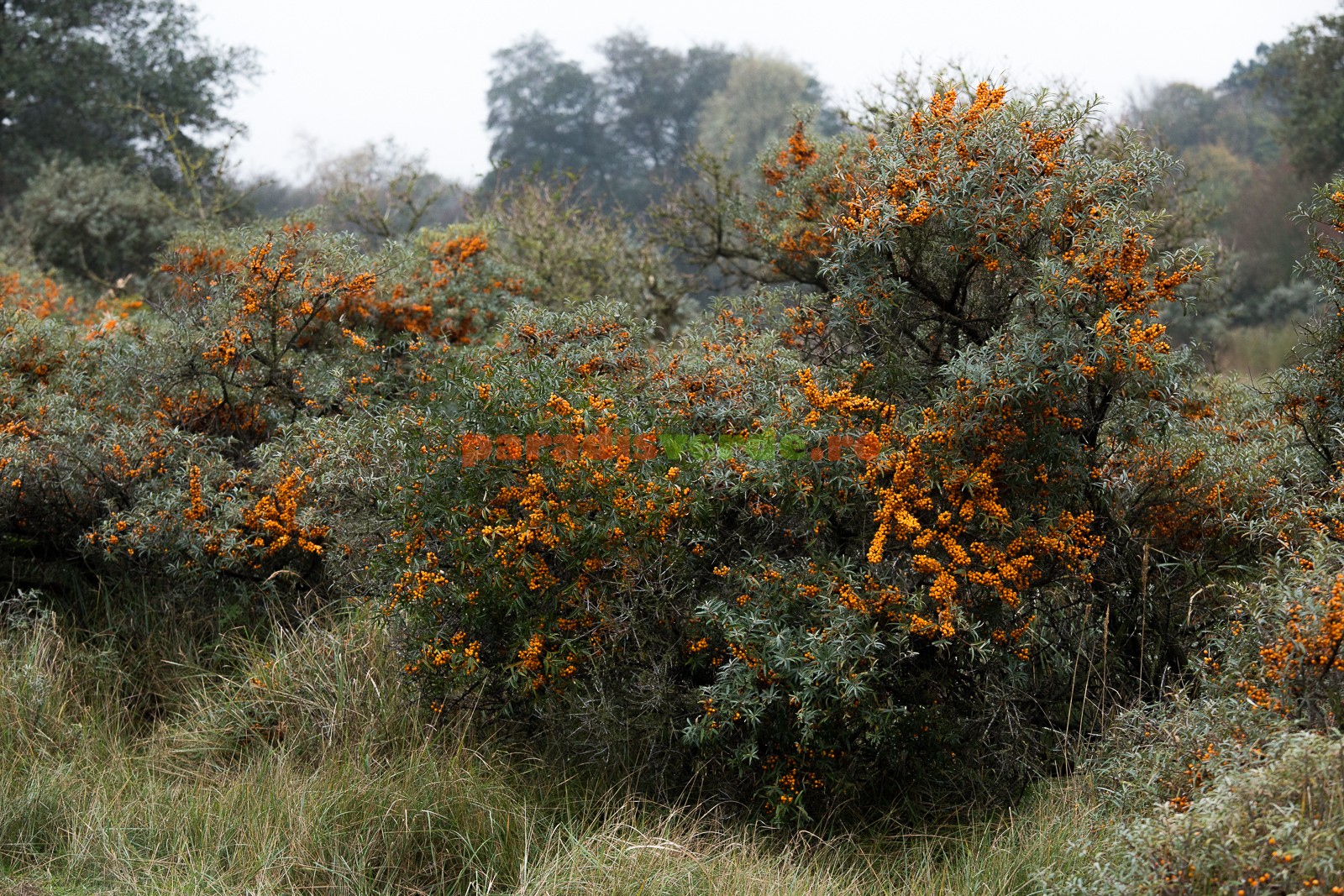Nestled amidst the rugged terrains of Eurasia and North America lies a plant of profound significance – Sea Buckthorn, also known as cătina. Revered for centuries for its exceptional medicinal and nutritional properties, this resilient shrub has captured the attention of herbalists, health enthusiasts, and researchers alike. In this exploration, we delve deep into the diverse facets of Sea Buckthorn, uncovering its rich history, nutritional composition, health benefits, and ecological significance.
Unveiling the Origins:
Sea Buckthorn, scientifically known as Hippophae rhamnoides, traces its roots back to ancient times, where it flourished in the harsh climates of the Himalayas, Siberia, and the coastal regions of Europe and North America. Revered by traditional healers such as Tibetan monks and Chinese herbalists, Sea Buckthorn earned its reputation as the “holy fruit of the Himalayas” due to its multifaceted benefits.
Nutritional Treasure Trove:
One of the most striking features of Sea Buckthorn is its exceptional nutritional profile. Bursting with a plethora of vitamins, minerals, antioxidants, and essential fatty acids, this humble berry stands as a nutritional powerhouse. Rich in vitamin C, vitamin E, vitamin A, and B vitamins, Sea Buckthorn offers a potent dose of immune-boosting nutrients. Moreover, its abundance of omega-7 fatty acids sets it apart, contributing to skin health, cardiovascular function, and overall well-being.
Health Benefits Unveiled:
The medicinal properties of Sea Buckthorn have been documented in ancient texts and continue to be validated by modern science. Its potent antioxidant content helps combat oxidative stress, thereby reducing the risk of chronic diseases such as cancer and cardiovascular ailments. Furthermore, its anti-inflammatory properties make it a valuable ally in managing conditions like arthritis and gastrointestinal disorders.
The high content of vitamin C in Sea Buckthorn supports collagen production, promoting skin elasticity and wound healing. Its omega fatty acids contribute to cardiovascular health by reducing inflammation and improving lipid profiles. Additionally, Sea Buckthorn oil has gained popularity in skincare products for its moisturizing, anti-aging, and healing properties.
Cultural Significance and Traditional Uses:
Across cultures, Sea Buckthorn holds profound significance, both medicinally and culturally. In traditional Tibetan medicine, it is revered as a panacea for various ailments, ranging from digestive issues to respiratory conditions. Similarly, Chinese medicine utilizes Sea Buckthorn to boost immunity, promote digestion, and enhance vitality.
Beyond its medicinal uses, Sea Buckthorn features prominently in culinary traditions. Its tart and tangy flavor adds a unique zest to jams, juices, teas, and desserts. In regions like Russia and Mongolia, Sea Buckthorn berries are used to make traditional alcoholic beverages like liqueurs and wines, offering a delightful blend of flavor and nutrition.
Environmental Stewardship:
Apart from its nutritional and medicinal prowess, Sea Buckthorn plays a crucial role in ecological restoration and sustainability. Thriving in poor soils and harsh climates, it helps prevent soil erosion and desertification, making it an invaluable asset in reforestation efforts. Furthermore, its nitrogen-fixing abilities enhance soil fertility, promoting the growth of other plant species in its vicinity.
The cultivation of Sea Buckthorn also presents economic opportunities for rural communities, offering a sustainable source of income through the harvest of its berries, leaves, and seeds. By promoting the cultivation of Sea Buckthorn, we not only harness its myriad benefits but also contribute to environmental conservation and rural development.
Challenges and Future Prospects:
Despite its myriad benefits, the widespread adoption of Sea Buckthorn faces certain challenges. Issues such as limited awareness, variability in berry quality, and sustainable harvesting practices need to be addressed to unlock its full potential. Moreover, research into its pharmacological properties and cultivation techniques is crucial for optimizing its utilization in various fields.
Looking ahead, the future prospects of Sea Buckthorn appear promising. As consumer interest in natural remedies and functional foods continues to grow, the demand for Sea Buckthorn-based products is expected to soar. Furthermore, advancements in agricultural practices and value-added processing techniques hold the key to harnessing the full spectrum of benefits offered by this remarkable plant.
Conclusion:
Sea Buckthorn stands as a testament to nature’s resilience and bounty. From its ancient roots to its modern-day applications, cătina continues to captivate with its nutritional richness, medicinal virtues, and ecological significance. As we unravel its mysteries and harness its potential, let us embrace Sea Buckthorn as a symbol of harmony between human health, environmental stewardship, and cultural heritage.

